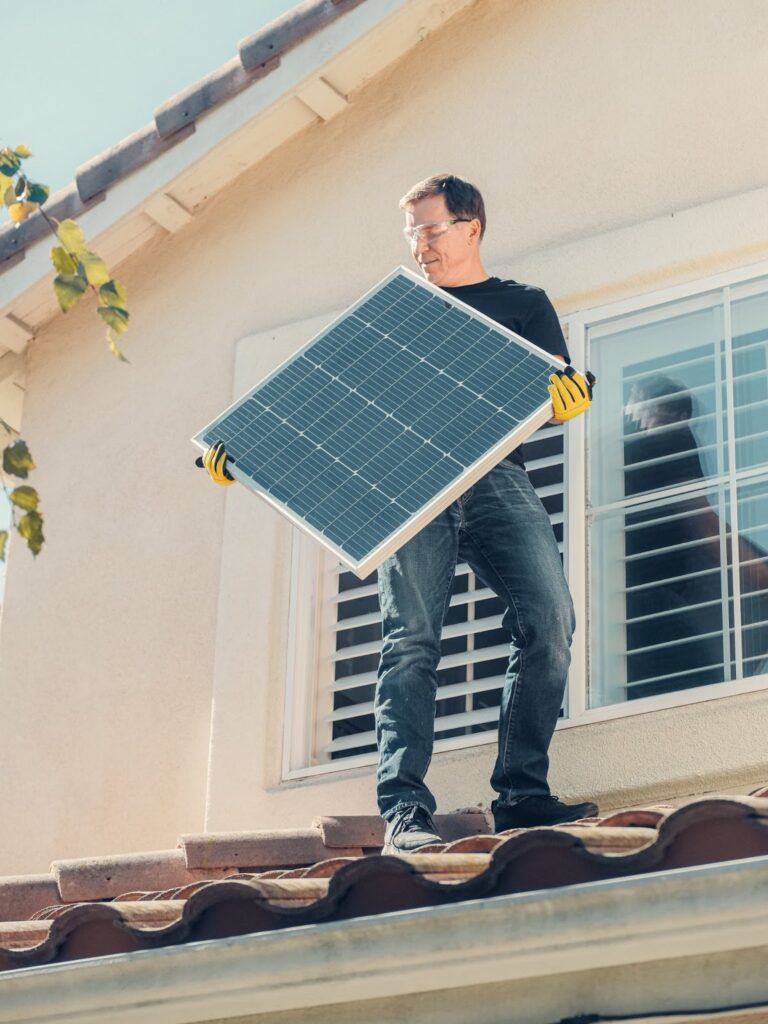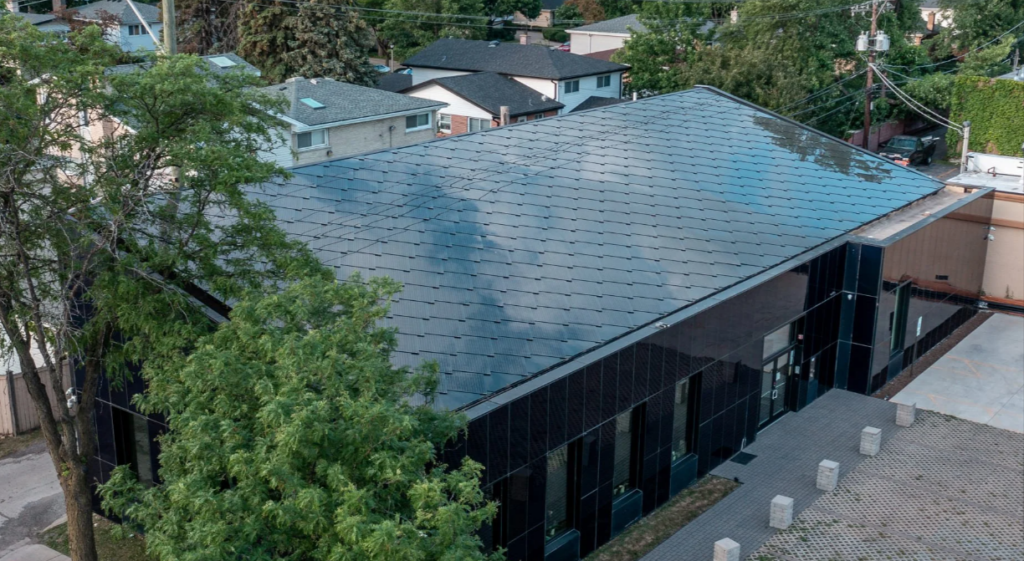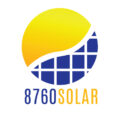
Solar panels vary significantly in price, largely due to the materials used in their photovoltaic layers – the critical components that capture light photons.
Therefore, when it comes to selecting the right solar panel for your needs, it’s vital to research these materials since they will directly affect the performance and longevity of your solar installation.
But here’s the challenge: many of these materials may sound similar but offer vastly different performances. This can make it tricky to figure out the best option for your situation.
But fret not because we’ve unraveled the mystery of solar panel types so you can fully understand what they are, how they work, and which ones are best to use.
Let’s get into it.
In a Nutshell
- The three main types of solar panels are monocrystalline, polycrystalline, and thin-film.
- Monocrystalline is expensive to manufacture but offers the best longevity and efficiency.
- Polycrystalline is cheaper to manufacture but uses lower-grade materials and is, therefore, less efficient.
- Thin-film panels are lightweight and flexible, giving them the greatest versatility. However, they are the least efficient type of solar panel overall.
- The future of solar panel technology will see it incorporated more and more into building materials and design.
What Is a Solar Panel Made of?
Where the average solar panel is concerned, there’s more than meets the eye, and quite a lot of materials will go into its construction, even though the end result actually looks quite simple.
A solar panel is essentially a “sandwich” consisting of many different layers:
- To hold everything together, a solar panel features an aluminum frame.
- The very top layer will consist of a protective sheet of tempered glass less than a quarter inch thick.
- Next will be an encapsulant layer made from a polymer material. This insulates the photovoltaic cells and protects them from moisture, dust, and dirt.
- After this, we have the photovoltaic cells, otherwise known as wafers. These are circular or square in shape and arranged next to each other in rows and columns.
- Light absorption coatings and metal electrical conductors are also added to each cell.
- Underneath the cells comes another layer of encapsulant.
- Then comes the backing sheet, which protects the inner layers.
- Finally, a junction box that connects the wiring and carries the harvested energy is attached to the back.
Different Solar Panel Types

Image credit: US Department of Energy
When we talk about the different solar panel types, we’re actually referring to the photovoltaic material inside the panels. In other words, the stuff that can absorb light and convert it into electricity.
There are three key types of photovoltaic material, within which are a few additional sub-categories.
Monocrystalline Solar Panels

Image credit: Silfab Solar
Monocrystalline solar panels are top-of-the-range when it comes to performance. Also known as “modules”, these solar panels are created using a specific manufacturing process called the “Czochralski method.”
The Czochralski method was invented in 1916 by Jan Czochralski. It’s a crystal growth technology that begins with a high-purity polycrystalline silicon crystal being heated to around 2573.6°F until it melts.
Another rotating seed crystal is dipped into the melted substance and is then pulled upwards to create solid cylindrical ingots of silicone, which are then sliced into thin wafers.
Then, between 32 to 96 wafers are used to construct each solar panel. They are laid in rows to form a rectangular sheet before being covered with a layer of glass and fixed in place with an aluminum frame.
The Czochralski method is very energy-intensive and results in a lot of wasted silicone. As a result, manufacturing this type of solar panel is the most costly.
So why do it if they cost so much to make?
What you pay out in cash for these solar panels you get back in efficiency. Monocrystalline panels are the most efficient type out there and are capable of capturing around 15% to 20% of light photons.
Additionally, monocrystalline panels, which are characterized by their dark black appearance, are:
- Highly durable and will have the longest warranties (usually 20 – 25 years).
- Able to perform well in low light.
- Generally more compact in size, making them a versatile option, especially if available space is a key concern.
There are also three key variations of the monocrystalline solar panels:
Passivated Emitter and Rear Cell Panels (PERC)
PERC solar panels are a further upgrade to standard monocrystalline panels. They feature an additional “passivation” layer that consists of a reflective material. This is placed on the back of the panel and serves to help capture more light photons.
- All in all, the PERC solar panel can capture around 24% of incoming photons – sometimes more.
- The reflective layer also acts to reduce the amount of heat generated by the panel and reduces electron recombination – a process that results in less energy generation.
- Of course, this improvement to monocrystalline technology comes at an extra cost, making them a more expensive option.
Bifacial Panels

Image credit: Qcells
Bifacial panels are interesting because they are double-sided. So, essentially, you have a light absorption surface on the front and rear of the solar panel.
The front face is positioned so that it can capture direct sunlight – just like any type of standard solar panel would be. The rear face is directed toward the ground and captures the indirect light that gets reflected back off the ground or surface.
- Bifacial panels work best when ground-mounted on elevated racking systems. Even better if they are positioned above a light surface, such as snow.
- Due to their elevated position, bifacial panels are a great option for agrivoltaics.
- Overall, they have a 22% – 23% efficiency rate.

Image credit: Vertex
At 8760 Solar, we use bifacial monocrystalline solar panels for all our installations. The brand we use is Vertex, which has a 21.2% maximum efficiency and up to 25% additional power gain from the back side.
Heterojunction Solar Cells (HJC)
HJC solar panels consist of a monocrystalline surface and additional layers called “amorphous silicon” that are placed on either side of the solar cells.
- These extra layers are capable of absorbing more wavelengths and reducing energy losses.
- Overall, this technology can achieve an efficiency rate of over 25%, making it the most efficient solar panel on the market today.
- Additionally, HJC panels have a higher tolerance for heat, making them ideal for hot climates.
- They are also the most efficient type of panel for low-light environments.
- Amorphous silicon is very cheap to make, so these panels offer a lower-cost alternative to traditional monocrystalline panels.
Polycrystalline Solar Panels

Image credit: Canadian Solar
Polycrystalline offers a more economical and efficient way to produce solar panels. Rather than using solid ingots of silicone, the polycrystalline wafers are created using lower-grade shards of silicone.
The shards are melted and then cast into square-shaped molds to form the ingots. When the silicone cools, the result is a speckled blue color and quite distinctive from the monocrystalline’s inky black appearance.
The ingots are sliced into wafers with a textured surface, which helps increase light absorption. Phosphorus is applied to one side of each wafer, and boron is applied to the other side. This enables the flow of electricity, while metal contacts applied to the front and back surfaces serve to collect the harvested energy.
Finally, the wafters are arranged into a rectangular grid pattern and placed between a glass layer and a back sheet. An anti-reflective coating is also applied to encourage light absorption. Then the entire structure is framed to hold it all together.
So what are the benefits and disadvantages of this type of panel?
- Since polycrystalline is far easier and cheaper to produce, these panels cost a lot less than monocrystalline, making them the choice for the budget-conscious among us.
- They are about as durable as monocrystalline and also come with warranties ranging from 20 – 25 years.
- They perform well in varying weather conditions and low-light conditions.
- The biggest downside is that polycrystalline is less efficient than monocrystalline and can only absorb around 13% – 16% of light photons.
- They are generally bulkier and larger than monocrystalline, making them less suitable for small spaces.
- Polycrystalline is less heat tolerant than monocrystalline, making it less suitable for high-temperature environments.
Thin-Film Solar Panels

Image credit: SunStyle
As the name suggests, thin-film solar panels are extremely slim and flexible. Only a few micrometers thick, they are comprised of semiconductor materials and there are several versions available.
Each panel consists of a photovoltaic layer, a conductive sheet such as aluminum, and a protective layer such as glass or plastic.
Thin-film panels are highly versatile and can be integrated into building materials like roofs and windows. Some other common applications include portable solar chargers and installations located in remote areas, and they are also widely used in utility-scale solar farms.
However, their space-saving and versatile nature comes at a cost in efficiency, as these are the least efficient type of solar panel overall, reaching a rate of only about 7% – 18%.
- Thin film panels also have a shorter lifespan than crystalline and only last around 10 – 20 years.
- Since they are less efficient, more panels and space may be required to reach the desired output.
- Because of their thin, flexible nature, these panels are more prone to cracking or breaking, particularly if exposed to extreme weather conditions.
- Thin-film panels have a good heat tolerance and can maintain their efficiency in higher temperatures.
- Because these panels can be incorporated into buildings, they provide the most aesthetically pleasing result.
Cadmium Telluride (CdTe) Panels
CdTe is the most widely used type of thin-film solar panel after crystalline panels and is mainly used in utility-scale applications. Cadmium telluride provides one of the best efficiency rates of all thin-film types (about 18%) while being relatively low-cost to manufacture.
However, the drawback here is its toxicity. Cadmium is an extremely dangerous material if handled incorrectly and requires special handling and disposal once the panels reach the end of their lives.
Copper Indium Gallium Selenide (CIGS) Panels
These panels are created with layers of copper, indium, gallium, and selenide on top of one another to create a powerful semiconductor. Because of the multiple layers, the end result is more rigid than other thin-film types, although they are still bendable to a degree.
Like CdTe panels, CIGS panels currently have an efficiency rate of about 18%. However, this technology is proving promising with efficiencies of over 23% recorded in lab conditions.
Since CIGS panels don’t contain toxic materials, they are more suitable for residential applications and are easier to dispose of. Where solar shingles are concerned, you will most commonly find them manufactured using CIGS.
Amorphous Silicone (a-Si) Panels
Amorphous silicon is very flexible. It uses a thin rubber-like strip of silicone that’s very easy and cheap to manufacture. The result is a non-toxic, ultra-lightweight panel.
The chief drawback of this material is its efficiency, which at about 7% is the lowest out of all panel types. Because of this, you tend to only find it used in small-scale applications such as consumer electronics. For example, solar-powered calculators and portable power banks.
Organic Photovoltaics (OPV)
OPV panels are an emerging technology that has shown promising results. Created from polymers and small organic molecules, the panels are extremely low-cost to manufacture and feature huge design flexibility.
Because it is a new way to create solar panels, OPV panels are still not widely available, but we will be watching this space with interest to see what emerges in the coming years.
Which Type of Solar Panel Has the Longest Lifespan?

Now that we’ve explained all the different types of solar panels that are available on the market, let’s talk about what you need to consider when purchasing them.
Solar installations are a significant investment, so you want to make sure your investment gives you as much of a return as possible. A key factor that feeds into this is the longevity of the panels.
To understand this, study the warranty of the panels in question. If they are good quality from a reliable brand, they will have a long warranty. However, bear in mind that solar panels often last much longer than their warranty. In fact, there are solar panels constructed in the 80’s that are still producing electricity to this day!
| Solar panel type | Typical warranty | Average lifespan |
| Monocrystalline | 25 years | 25 – 40 years |
| Passivated Emitter and Rear Cell (PERC) | 25 years | 25 – 30 years |
| Bifacial | 25 years | 35 – 40 years |
| Heterojunction Solar Cells (HJC) | 25 years | 30 – 40 years |
| Polycrystalline | 25 years | 25 – 30 years |
| Cadmium Telluride (CdTe) | 10 – 25 years | 25 – 30 years |
| Copper Indium Gallium Selenide (CIGS) | 10 – 25 years | 20 – 30 years |
| Amorphous Silicone (a-Si) | 10 – 20 years | 5 – 10 years |
Which Type of Solar Panel Is Most Efficient?

Efficiency is highly important if you want to get the most bang for your buck. The lower the efficiency is, the more panels you will require to get the desired output. And the more panels you need, the more space and racking equipment are required, which can also serve to drive up costs.
| Solar panel type | Efficiency range |
| Monocrystalline | 15% – 20% |
| Passivated Emitter and Rear Cell (PERC) | Up to 24% |
| Bifacial | 22% – 23% |
| Heterojunction Solar Cells (HJC) | Up to 25% |
| Polycrystalline | 13% – 17% |
| Cadmium Telluride (CdTe) | Up to 18% |
| Copper Indium Gallium Selenide (CIGS) | Up to 18% |
| Amorphous Silicone (a-Si) | Up to 7% |
What Is the Capacity of Each Solar Panel Type?
Capacity is really important since this also determines how many solar panels you’re going to need. For example, to get the same output as a single monocrystalline solar panel, you would need at least two square meters of CIGS panels.
Bifacial solar panels and PERC panels offer the highest available efficiency, while unsurprisingly, amorphous silicone offers the least.
| Solar panel type | Watt capacity |
| Monocrystalline | 250 – 340 watts (60 cell panel) |
| Passivated Emitter and Rear Cell (PERC) | 300 – 400 watts (60 cell panel) |
| Bifacial | 300 – 500 watts (60 cell panel) |
| Heterojunction Solar Cells (HJC) | 300 – 330 watts (60 cell panel) |
| Polycrystalline | 250 – 290 watts (60 cell panel) |
| Cadmium Telluride (CdTe) | 90 – 130 watts (per square meter) |
| Copper Indium Gallium Selenide (CIGS) | 150 – 190 watts (per square meter) |
| Amorphous Silicone (a-Si) | 50 – 80 watts (per square meter) |
How Much Do the Different Solar Panel Types Cost?

There are a lot of factors that play into the cost of a solar panel. The panel type, the quality of the materials, where it was manufactured, and the brand all affect its average retail price.
Supply and demand can also affect costs. For example, in the wake of the pandemic, costs shot up because demand outstripped supply. Thankfully, this has leveled off now and costs have stabilized.
| Solar panel type | Average cost per watt | Average cost for 10kw system |
| Monocrystalline | $1 to $1.50* | $10,000 – $15,000 |
| Polycrystalline | $0.75 to $1* | $7,500 – $10,000 |
| Thin film | $1.00 – $1.50 | $10,000 – $15,000 |
* Add an additional 10 to 20 cents per watt for bifacial designs.
What Will Solar Panel Technology Look Like in the Future?

Image credit: Solar window
Solar energy is fast becoming a mainstream way to produce energy, and because of this more and more research and development is going into solar panel technology.
For example, the possibility of solar paint – where paint can be applied that then acts as a solar panel – is currently being explored. Imagine if all you had to do to get free solar energy was to simply paint your property!
Solar panels are already being incorporated into buildings and structures but in ever more subtle ways. For example, crystal clear solar glass now exists, which allows your windows to double up as solar energy producers. Solar shingles – which replace conventional roof tiles – are gaining in popularity. And there’s even talk of solar roads, an exciting proposition that will allow the dynamic charging of electric vehicles.
Ultimately, we can look forward to more cost-effective ways to produce solar panels, which results in lower costs and better returns for the consumer.
Which Types of Solar Panel Does 8760 Solar Use?

At 8760 Solar, we prioritize efficiency, durability, and longevity. Our suppliers GreenTech Renewables and Trina Solar provide high-quality monocrystalline and monocrystalline bifacial panels.
Because we specialize in providing solar energy to farms and agriculture, having solar panels that can easily withstand the environment is of the utmost importance. And we feel that monocrystalline panels strike that perfect balance between performance and cost.
To understand more about the types of solar panels we supply to our clients, or if you want to know more about solar power in general, then please don’t hesitate to get in touch.
Text “READY” to 719 470-0254 or contact us via email: sales@8760solar.com and we’ll get back to you right away!
Frequently Asked Questions
Which Type of Solar Panel Is Best?
Monocrystalline solar panels strike the best balance between performance and cost. However, if you’re looking for a solar panel that offers the highest efficiency rates, bifacial or heterojunction cell panels will generate the most electricity out of all panel types.
What Are the 3 Types of Photovoltaic Panels?
The three main types of solar panels are monocrystalline, polycrystalline, and thin-film.
What Is the Most Economical Solar Panel?
The most economical solar panel is polycrystalline. Although not as efficient as monocrystalline, it still provides a decent efficiency rate at a relatively low cost. However, if you’re prepared to pay a bit more, monocrystalline will give you better efficiency and provide a more economical solution in the long run.
What Is the Newest Solar Panel Technology?
Building integrated photovoltaics (BIPV) is an exciting advancement in solar technology where solar panels are incorporated into building materials in a variety of ways.
Organic Voltaics – where organic compounds are used to create solar panels – is also a new and promising technology. This is because it will remove our reliance on the metals used in current solar technology, which are becoming increasingly harder to source.
What is the Most Efficient Solar Technology?
Currently, monocrystalline solar panels provide the most efficiency. Particularly bifacial solar panels that absorb ground-reflected indirect sunlight as well as direct sunlight.
